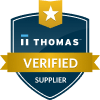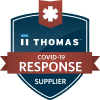At Fournier Rubber & Supply Company, we are an industry-leading supplier of gaskets and other rubber and plastic products. We offer standard rubber products from highly reputable manufacturers and custom product manufacturing capabilities for specialized or unique applications. Below, our experts answer some of the most frequently asked questions (FAQs) about our products to serve as a helpful resource for existing and potential customers.
Rubber Gaskets
Industrial Hoses & Ducts
Sheet Rubber
Paint Filters
For additional information about the products at Fournier Rubber & Supply Company, contact us or request a quote today. Our experts will be happy to answer or address any questions or concerns you may have about them.




